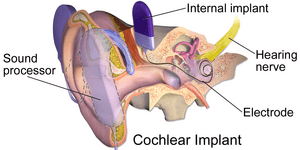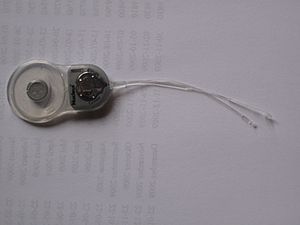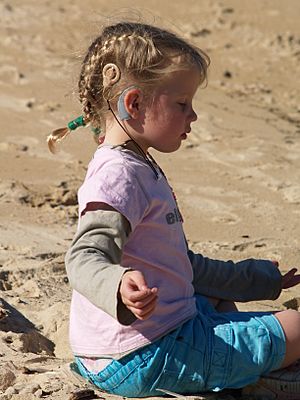Cochlear implant facts for kids
A cochlear implant (CI) is an electronic device that is inserted by surgery into a part of the ear called cochlea. Persons who are having difficulty in hearing or are completely deaf use the device to help them hear better. Not all parts of the cochlear implants are inside the ear. They have a microphone and some electronics that are usually placed behind the ear. These electronics send signals to the device implanted in the ear to make hearing possible.
Most cochlear implants have the following parts. They are divided into external parts which can be seen outside and internal parts which are implanted:
Contents
External
- one or more microphones that pick up sound from the environment
- a speech processor which separates sounds from noise
- a transmitter that sends power and the processed sound signals across the skin to the internal device by electromagnetic induction,
Internal
- a receiver/stimulator, which receives signals from the speech processor and turns them into electric impulses.
- an electrode inserted in the cochlea
Implanting the device requires proper care and skill.
The total cost of a cochlear implant in the United States was about $100,000 in 2017. Health insurance sometimes pays for all or part of the cost of cochlear implants. The national health insurance schemes in the United Kingdom, Australia, Ireland, Spain, and Israel pay fully for the costs of cochlear implants. The Ministry of Health in New Zealand pays the for the new cochlear implant depending on the cause of deafness.
Images for kids
See also
 In Spanish: Implante coclear para niños
In Spanish: Implante coclear para niños






